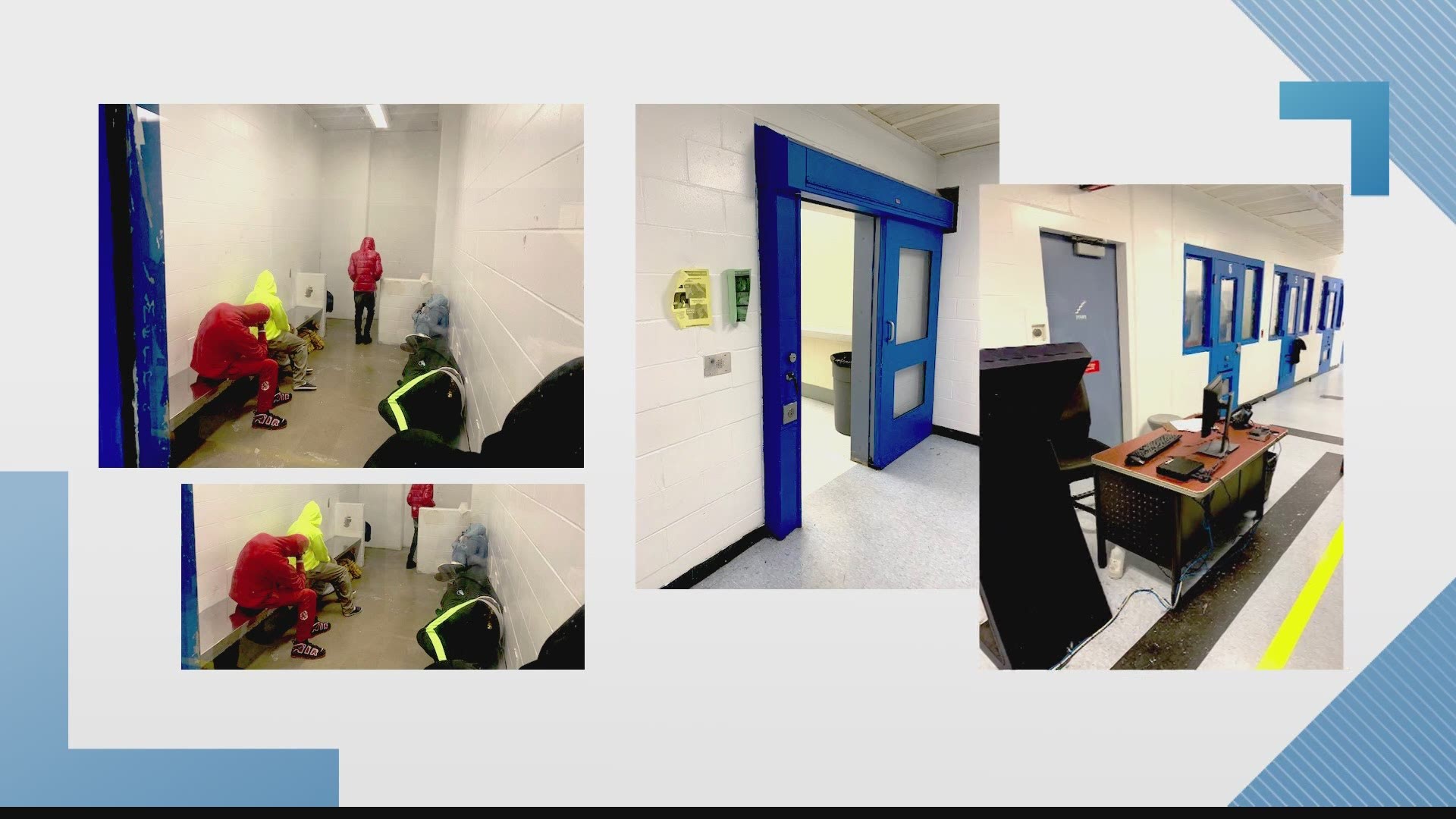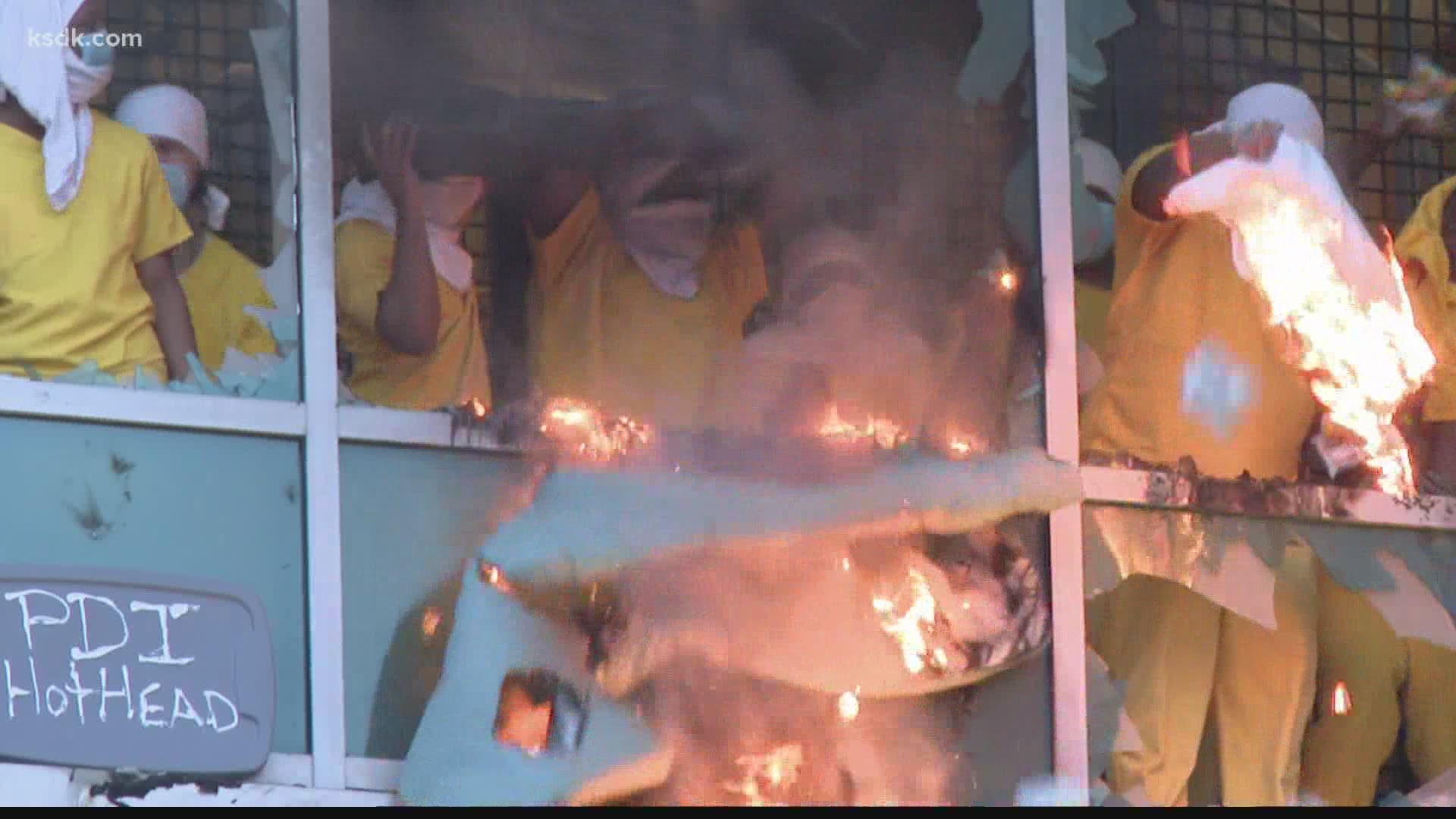ST. LOUIS — Faulty locks, broken cameras, unmanned checkpoints, "multiple" overdoses, several uprisings, delays in moving prisoners, at least one inmate kept unnecessarily in isolation and unresponsive Department of Corrections administrators are among a multitude of complaints outlined in police memos regarding the city’s downtown jail obtained by 5 On Your Side.
The memos outline a growing tension between St. Louis police commanders and Department of Corrections staff, as police commanders say their warnings to corrections administrators — including Commissioner Dale Glass — about potential security issues went unanswered for months.
At the City Justice Center, police officers and civilian staff members control the first floor. That’s where arrestees are booked. From there, they are supposed to be sent along to other floors of the jail, care, custody and control becomes the role of the corrections staff.
But the memos obtained by 5 On Your Side say that handoff hasn’t been going smoothly for months.
In one case, police commanders noted an arrestee was kept in isolation for three days because corrections staff refused to take him to the second floor, and he missed his court appearance.
Delays also cause frustration among arrestees, who know moving to the second floor means they are closer to being released, according to the memo.
“If these concerns continue to go unaddressed, we may face incidents of a more severe nature,” according to the memo, which outlined a series of issues dating to Oct. 1, 2020. “The problems of the upper floors of the Justice Center will inevitably bleed to the first floor and become a major (St. Louis Metropolitan Police Department) issue.
“It has become very clear the Department of Corrections either does not know how to address these issues or is just refusing to share their knowledge and assistance with us.”
But the mayor's office remains fully confident in the current public safety administration, which includes Glass and his boss, Public Safety Director Jimmie Edwards, according to Jacob Long, a spokesman for St. Louis Mayor Lyda Krewson.
"We welcome any opportunity to do better and develop stronger cooperation with our law enforcement partners," Long said. "We believe under the leadership of Dale Glass, the corrections division is running a very good operation at the (City Justice Center)."
Krewson appointed a task force to study the issues that led to the uprising, asking them to investigate complaints about conditions inside the jail, urgent building and equipment needs as well as a backlog of cases in the courts.
"Our public safety department has been very transparent about these issues, about the locks, and all that we've been doing to address them pre-COVID," Long said. "It's very complex and expensive to do in a building that's 20 years old."
The City Justice Center erupted in violence Feb. 6 after about 100 inmates — mostly on the fourth floor — escaped from their cells, attacked a corrections officer, set fires, broke windows and threw furniture to the ground below.
But there were at least three previous uprisings that took place before that day, according to the memos.
“On Dec. 29, Dec. 31 and Jan. 1 a large inmate uprising occurred on the third and fourth floors of the Justice Center,” according to the memo.
The following is a summary of concerns noted by police commanders, which occurred between Oct. 1, 2020, and Feb. 10, 2021:
- A police sergeant noted he has “serious concerns" for the safety of his staff, arrestees and officers coming and going from the building.
- Since Oct. 1, 2020, “multiple” inmates have overdosed on various floors of the Justice Center and the Department of Corrections refuses to tell police about them, which can cause a delay in getting fire department personnel to the emergencies.
- Department of Corrections calls EMS for medical emergencies, but there are multiple entry points to the building. Police officers man the first floor, but when medics arrive, they don’t know where to send them because DOC staff didn’t tell them they called EMS.
- Department of Corrections staff did not notify police commanders about the Dec. 29, Dec. 31 and Jan. 1 uprisings. “This refusal to communicate with my staff could cause a delay in evacuation and expose everyone to unnecessary risk,” according to the police memo.
- Department of Corrections has delayed bringing prisoners to the second floor after they have seen a nurse.
- On Jan. 10, the Department of Corrections refused to accept arrestees on the second floor for two shifts, causing a backup of prisoners and delaying them from moving through the arrest process. “Arrestees know, when they move to the second floor, they are that much closer to release. Delaying that move causes the arrestees to become unnecessarily agitated, creating risk of violence on our floor,” according to the memo.
- One arrestee was kept in isolation on the first floor for three days because corrections staff refused to accept him to the second floor. This caused him to miss his initial appearance in court. “By no fault of our own, we were forced to violate this arrestee’s right to appearance because of corrections’ refusal to accept him to the second floor,” according to the memo.
- Civilian clerks have minimal defensive tactics training. “If Department of Corrections continues refusing to take arrestees to the second floor for eight plus hours, a multiple arrestee disturbance is inevitable. The Department of Corrections Special Response Team would be our first line of defense for an incident like this, but the events of Dec. 29 and Jan. 1 showed us they are incapable of helping.”
- Unresponsive corrections administration. “For almost a year they would refuse to move prisoners until I would walk around the building, find a Department of Corrections Supervisor and force them to take prisoners upstairs. It was not until December 2020 Corrections leadership stopped responding to any of my emails or calls for concern.”
- Software update “several months ago” caused issued with door control system. “Corrections staff has not provided a timetable for this to be fixed.”
- Cameras not working at a key location. 5 On Your Side will not disclose the location for security reasons.
Long called overdoses at the jail "a serious concern."
"Drugs and contraband should never enter the facility," he said. "But I'm limited as to what I can say about that because there are personnel issues that our public safety department is actively working."
Long also noted the City Justice Center is about 20 years old. It is a 400-square-foot building that can hold about 900 detainees, he said.
"When we're talking about an aging facility like that, there's bound to be issues," he said. "You can walk into any city building and find areas in need of improvement."
He acknowledged staffing is also an issue.
"Despite our best efforts to raise pay, staffing has been a challenge," he said, adding the department is about 70 staff members short.


